In her artist’s statement, Lexington mixed media artist Helene Steene says she is intrigued by “the tension between forms, lines, and colors that ultimately can resolve in harmony.â€Â She is also captivated by the resistance of the wood on which she works, to which she can apply multiple layers of glazed oils, attach strips of sanded metal, and into which she can hammer roofing nails if she pleases (and she does). She works boldly, never from a palette, mixing her colors directly on the prepared surface to create depth and to allow her medium to take her where it will.Â
Steene is tenacious and extremely sensitive in her approach to making art: “If my work can slow someone down to contemplate something within her or himself – if the work can add a moment of focus on their inner peace in this absurd world – then I have reached the viewer. We, the viewer and the mark maker, would be connected through that ephemeral magic that is all around, as I am convinced that one’s range of intellect is so trivial in the face of greater mysteries.”

One of these “greater mysteries†is fully embodied in her Moon Sentinel I. I was smitten by its transcendental glow as I stood in her studio and gazed at it. Socrates was the first to insist that the moon is made of stone, and so is Steene’s—white marble, or marble dust to be exact, which gives it its pitted luminosity, creating a tranquil tension akin to the moon’s gravitational force on the earth’s tides.
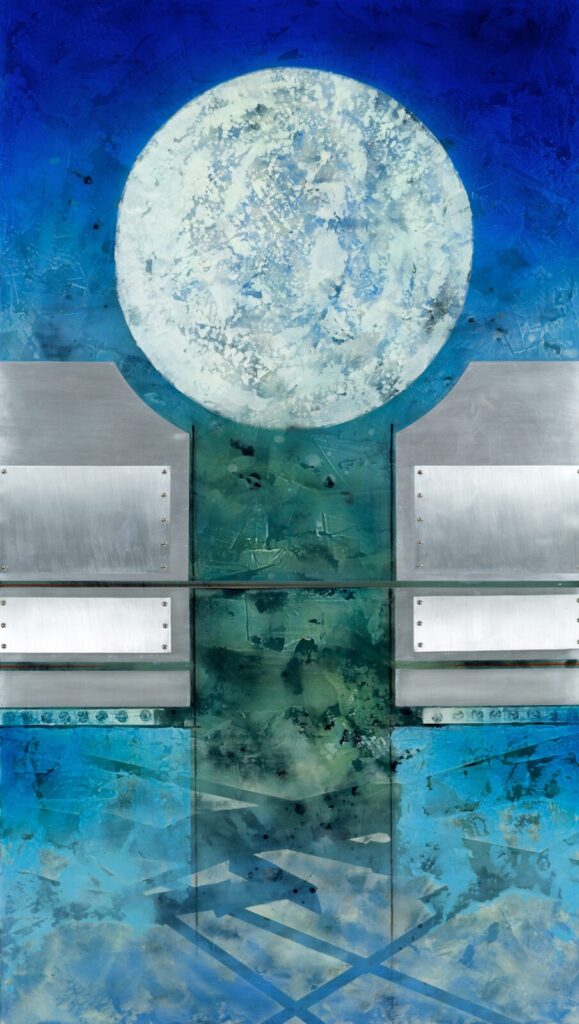
The magical effect of the marble dust and the peacefulness of the blues, turquoise, and greens stand in sharp contrast to the reflective pieces of metal symmetrically placed on each side of the moon, creating a gateway into the night sky. Even though night’s guardian stands guarded, it still has the power to stir our innermost spiritual natures, to “pull†us in.Â
The artist’s orbs do no less. We usually don’t think of circles and squares as being necessarily complementary, (square peg in a round hole) but because they are considered traditional forms that most artist work with, Steene challenged herself to create a structural harmonious relationship between the two. Her mission was accomplished with her orb series which include Oculus 1 & 2.
[row][column md=”6″]

[/column][column md=”6″]

[/column]
[/row]
They, like the moon sentinels, are also intriguing studies in symmetry and mystery. You may see an eye when you look at them or you may see a planet at the very core suspended in a square universe. Be what they may, the artist stays true to her philosophic intent by granting her viewer the latitude that frees the “ephemeral magic†to take precedence over “one’s range of intellect,†and to open the door to a more personal experience and connection with her art.Â
Steene’s finely-tuned process figures prominently into her success as an abstract impressionist. She applies thin layers of liquin oil, or glaze, which stay wet allowing for extended manipulation as she sprinkles on powdered pigments made from crushed minerals. The intense colors you see in Aegean Nine as well as Aegean Blue Fresco I are the result of building up the canvas with the desired mix of pigments and oil, glazing layer upon layer until the desired effect is achieved. Consequently, the word fresco appears in many of her titles.
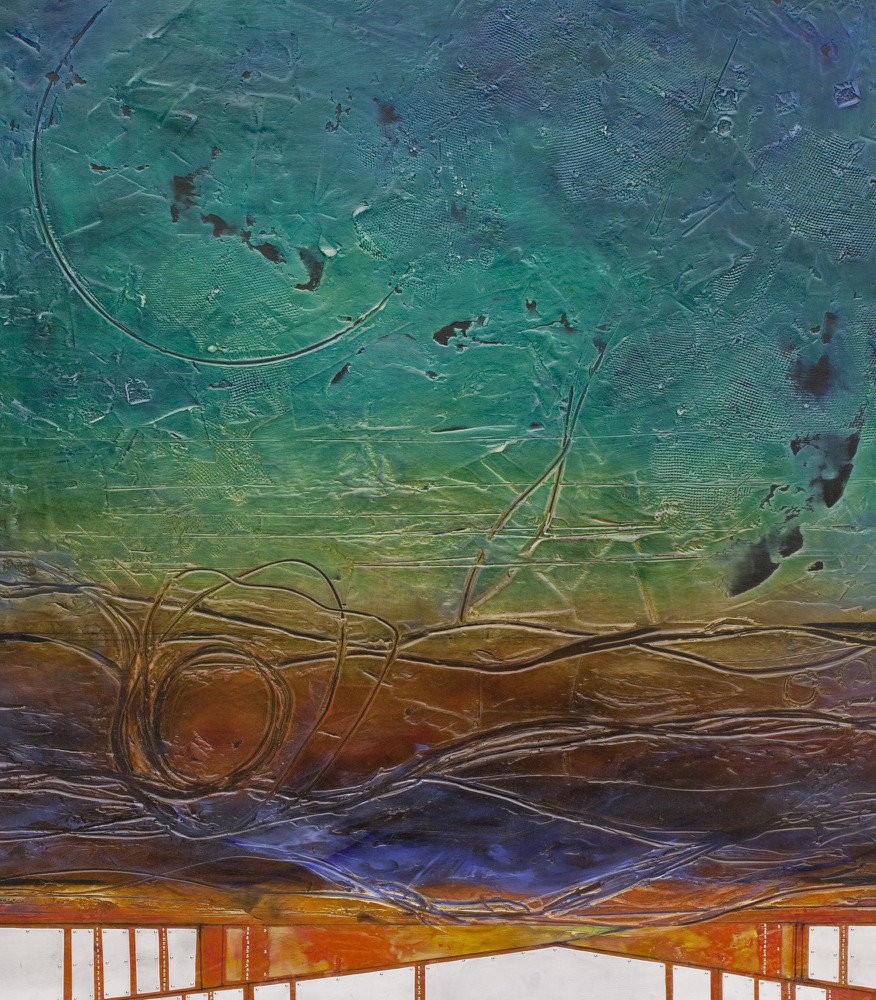
She states, “If I go too dark, I can sand back between the layers of colors to get to the marble dust to bring out more of the luminosity. So a very blue piece may actually have 20 different layers of blues on it and because it is applied in different ways and sanded off in different ways, it glows. The light actually travels through and the translucence remains regardless of the number of layers.â€Â She uniquely refers to this occurrence as “the linguistics of light.â€
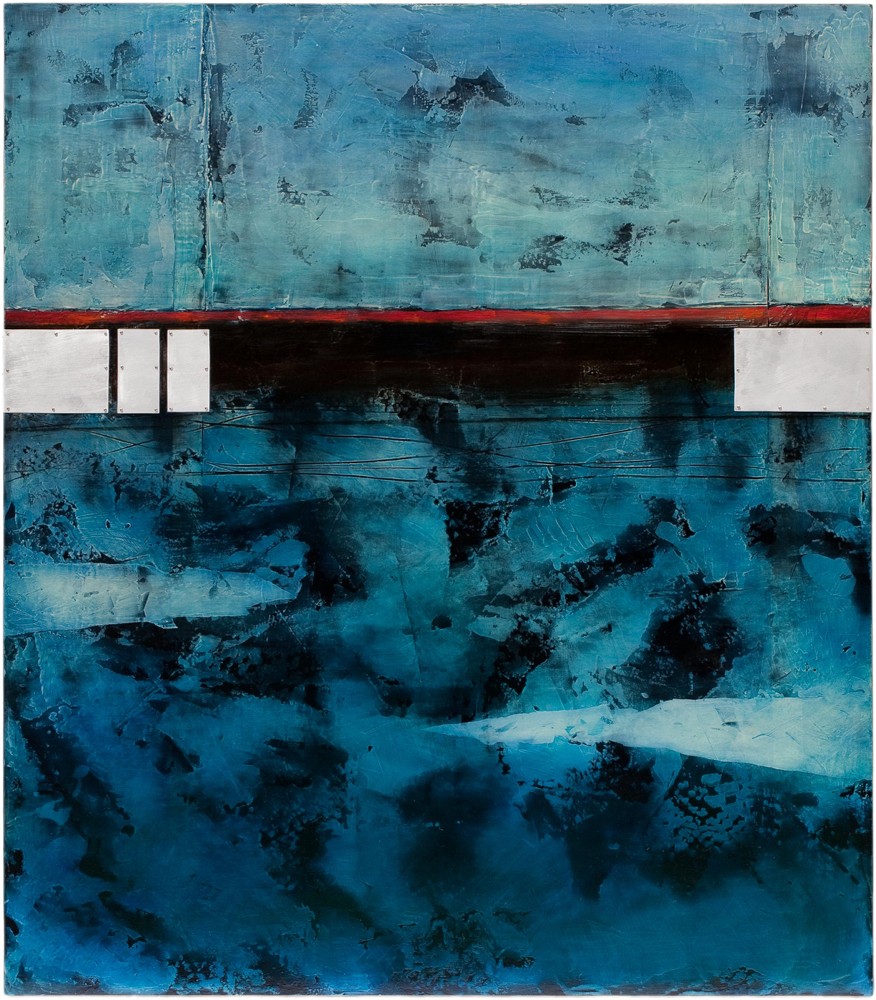
The Aegean paintings and Antiquity Dive I & II do not possess the symmetry of the moons and orbs. But they do demonstrate an impressionable delicate balance, vertically and horizontally, created by the irregular size and placement of the metal plates and strips on the canvases as well as the irregular lines (or horizons) that establish the spatial relationship between the striking combination and mixtures of brilliant colors.
You may even reel a little as you look at the Antiquity Dives and are pulled into the depths of their raw, natural beauty. The metal at the bottom of the composition is almost like a thin barrier reef protecting the viewer from these sometimes foreboding and potentially destructive elements but without creating a sense of detachment or alienation from the scene. The effect is a bit like snorkeling—where you are still able to safely breathe as you immerse yourself and become a part of what you see.
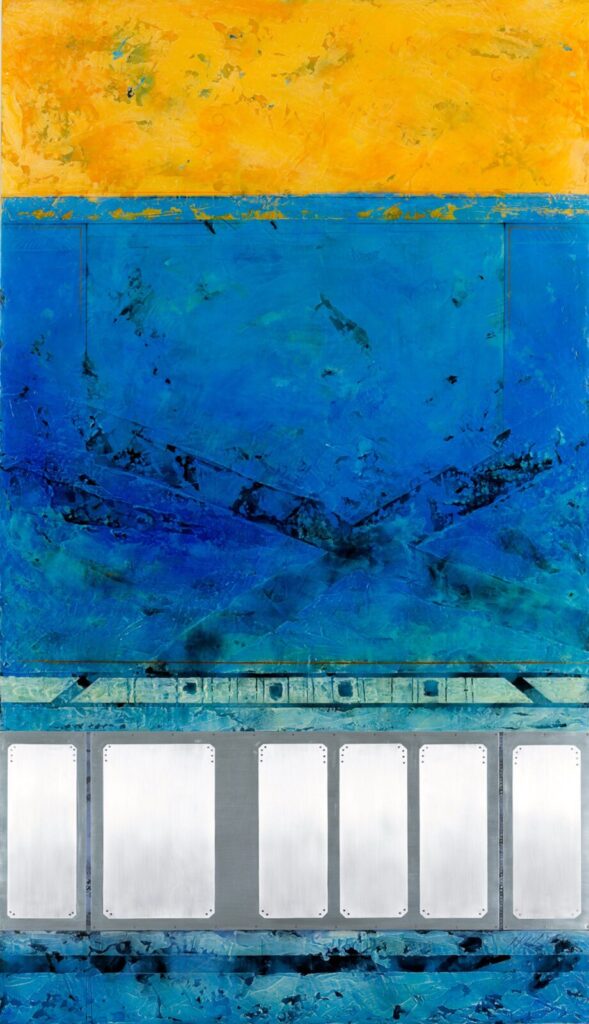
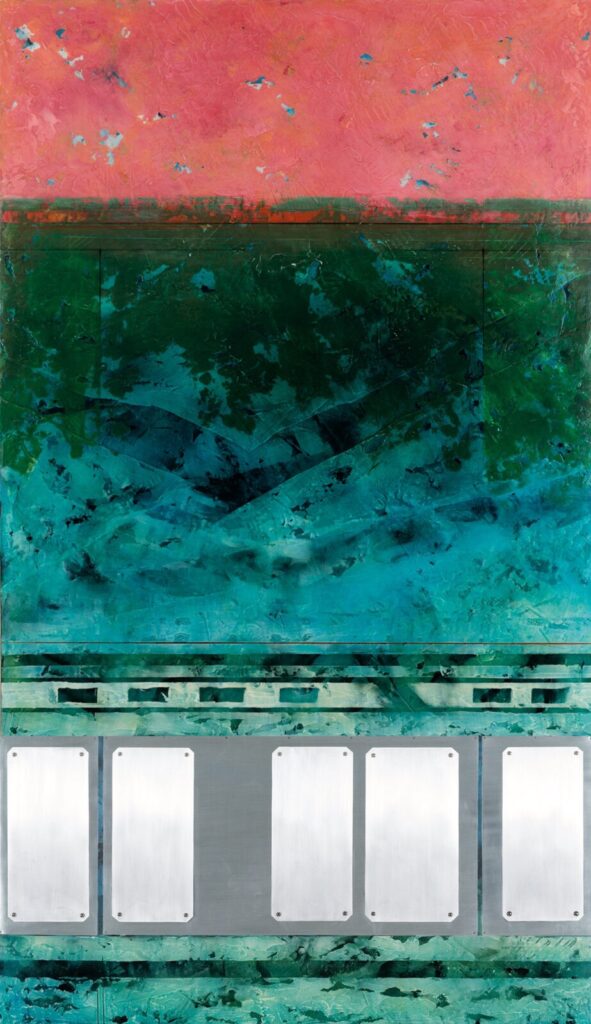
If you detect a slight Rothko feel in some of Steene’s art, you would not be wrong. She says she has recently come to appreciate the simplicity of his work and employs some of his techniques. Yet in that simplicity, there is a certain complexity that makes her work particularly expressive and engaging for her viewers. Other influences include Kenzo Okada, a Japanese/American painter who uses encaustic, a translucent wax, to lend a mysterious layering to his art. And she admires the paintings of contemporaries such as Richard Diebenkorn and Marsha Meyers in addition to the old masters like Titian and Vermeer because of their use of color and glazing. Her mastery, however, is guided by her intuition, training, personal life experiences, and observations of nature.
Steene was born in Sweden and lived in other parts of Europe (England, Germany, Spain, and Greece) before coming to the U.S. in 1976 where she received part of her art education at George Washington University in Washington, D. C., and then obtained her MFA from the University of Kentucky in 2004.
Although she has lived in Lexington since the early 80s and is enchanted by the beauty of the Bluegrass, Greece is her passion and has been her source of inspiration for the last thirty-two years. It’s the call of the Aegean—the wine red sea of Homer, and of Helios—the god of the sun who drives his chariot daily across the Grecian skies. It’s the call of Asclepius—the god of healing, and the call of her summer home on the island of Paros, known for its fine-grained, semi-translucent, pure white marble.
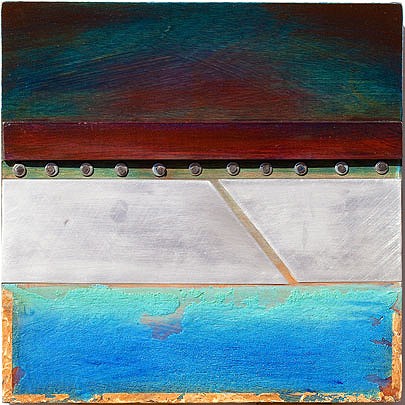
In a portion of her statement for her Aegean Echoes exhibit at the Headley-Whitney Museum in the fall of 2013, Steene speaks of Paros as “A place where I have experienced great passion and a place where I asked for a divorce. A place where my child learned to swim like a fish and the place of utmost sadness when the sea took my best friend’s child. A place where I skinny dip in the golden sea when the rising morning sun comes flashing over the water . . . a sea that gives and takes with equal powers.â€
The scene was captured by musician-composer Rusty Crutcher in music written specifically for the Aegean Echoes exhibit.
Crutcher, it turns out, was one of several Lexington artists who gravitated to Steene’s tribute to the Aegean. She recalls how it all came together.
Steene’s triptych, Archilochus’ View crisscrosses and etches into her viewers’ hearts and minds an emotionally mixed empathic sense of place.
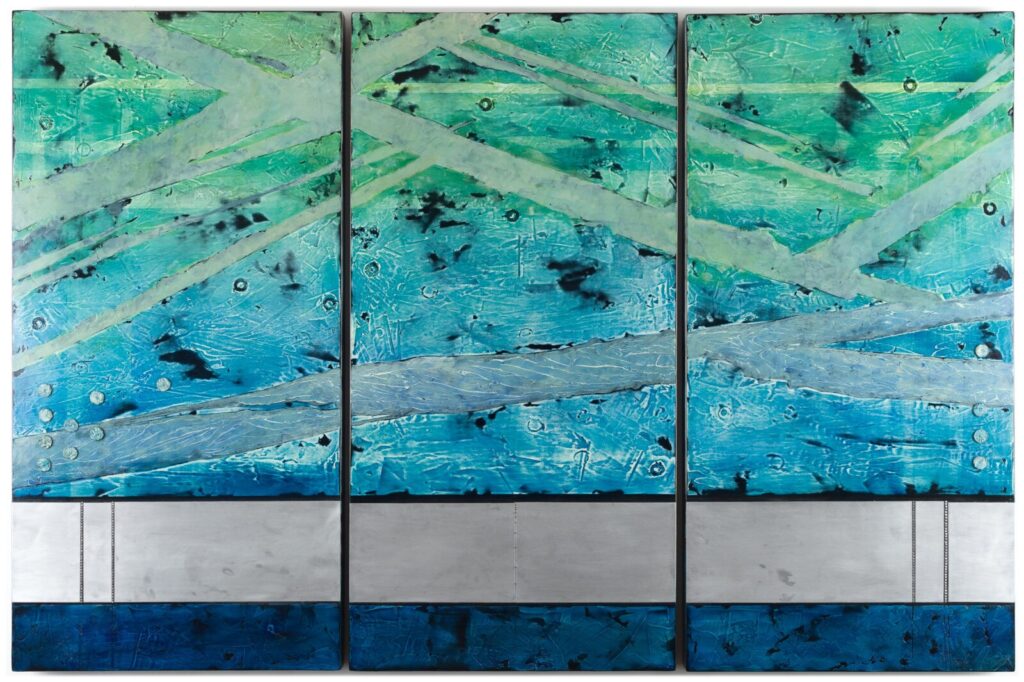
The following lines of this great poet who lived on the island of Paros in 7th century BCE echo and illuminate her reflections on her home away from home: “Take the joy and bear the sorrow, looking past your hopes and fears: / learn to recognize the measured dance that orders all our years†(Archilochus: To His Soul). Also, the quality of light that bathes Paros holds special interest for Steene as it spills from Helios’ chariot into the sea and is reflected back onto the landscape from the waters of the Aegean—an ever-changing horizon that appears in most of her paintings.
Steene’s art is not only concerned with the language of light, but also the language of the heart. Her Visual Poetry is a series of collages on paper—a collaboration with a friend who writes the poetry and she then chooses the words that represent the essence of what the poem means to her. It’s a two-way street between the artist and her viewer as well: “If I gave you myself in an unguarded moment . . . would we leave our marks on one another’s hearts? â€Â I think we know the answer to this question.
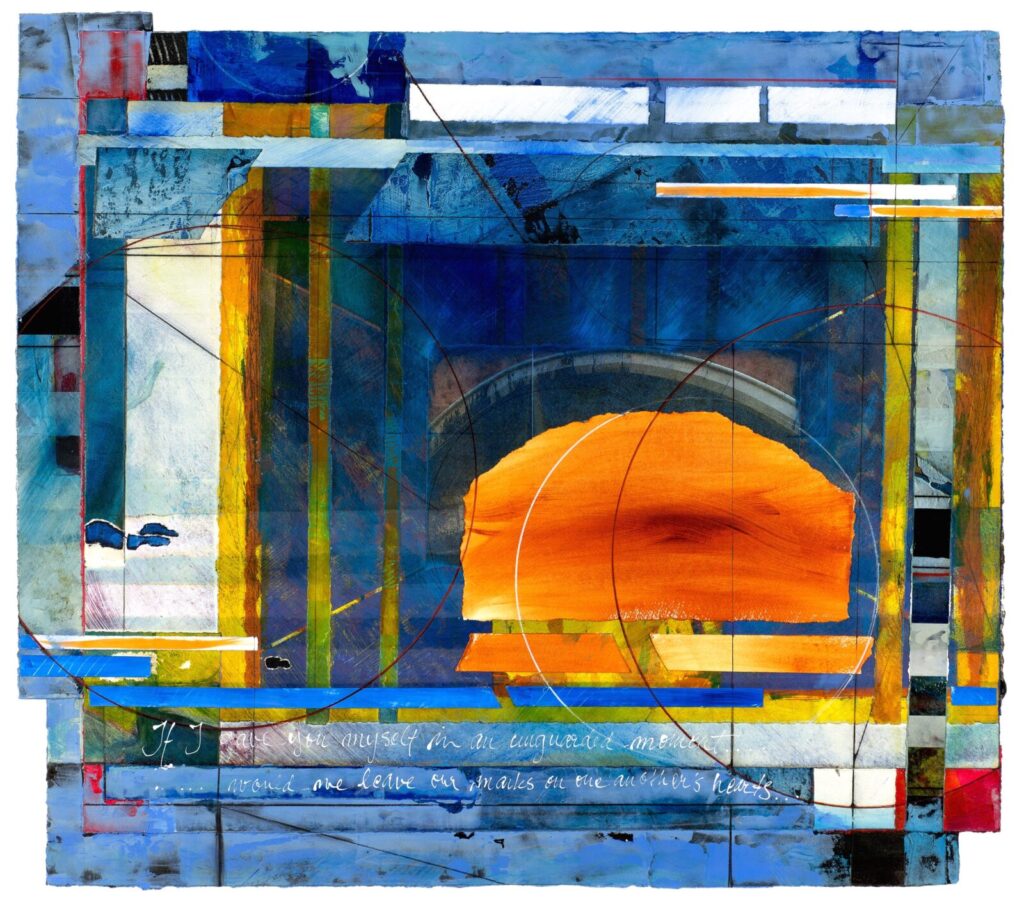
Steene has participated in over 200 exhibitions worldwide in the last thirty-five years and has exhibited her work in most of the major galleries in the Lexington area and throughout the state. She is gaining more national and international attention as well. With her concentration on nature and the healing effect of art, private collectors, corporations, and medical institutions are beginning to show an increased interest in purchasing and installing her work. They, along with Steene, recognize the truth in Aristotle’s words that “In all things of nature, there is something of the marvelous.†Visit her website (www.helenesteene.com) to see her CV and portfolios.
Currently, Steene is an award-winning participant in this year’s Art Santa Fe Expo (A Spectrum Art Show—July 13-17) which will include some of her new work as well as pieces from Aegean Echoes. She also received the honor of having her painting, Mesimeri, selected for the event’s full-page ad running in the July issue of American Art Collector.

This fall in Lexington, Steene will be exhibiting new work, such as Oculus 3, in a duo show with sculptor Julie Warren-Conn at the Pam Miller Downtown Arts Center at 141 East Main Street. The opening reception for the show, Complex Simplicities, will be on October 6th from 5-8:00 p.m. with a Gallery Hop reception on November 17th from 5-8:00 p.m. The exhibit runs through December 3rd and the hours for the City Gallery are as follows: Tuesday-Thursday, 11 a.m. to 5 p.m.; Friday-Saturday, 11 a.m. to 8:00 p.m.; and Sunday, 10 a.m. to 2 p.m. You may contact the gallery by phone (859-425-2562) or email (clewis2@lexingtonky.gov). The eye of the universe is upon you. Catch the glow—go see the show.
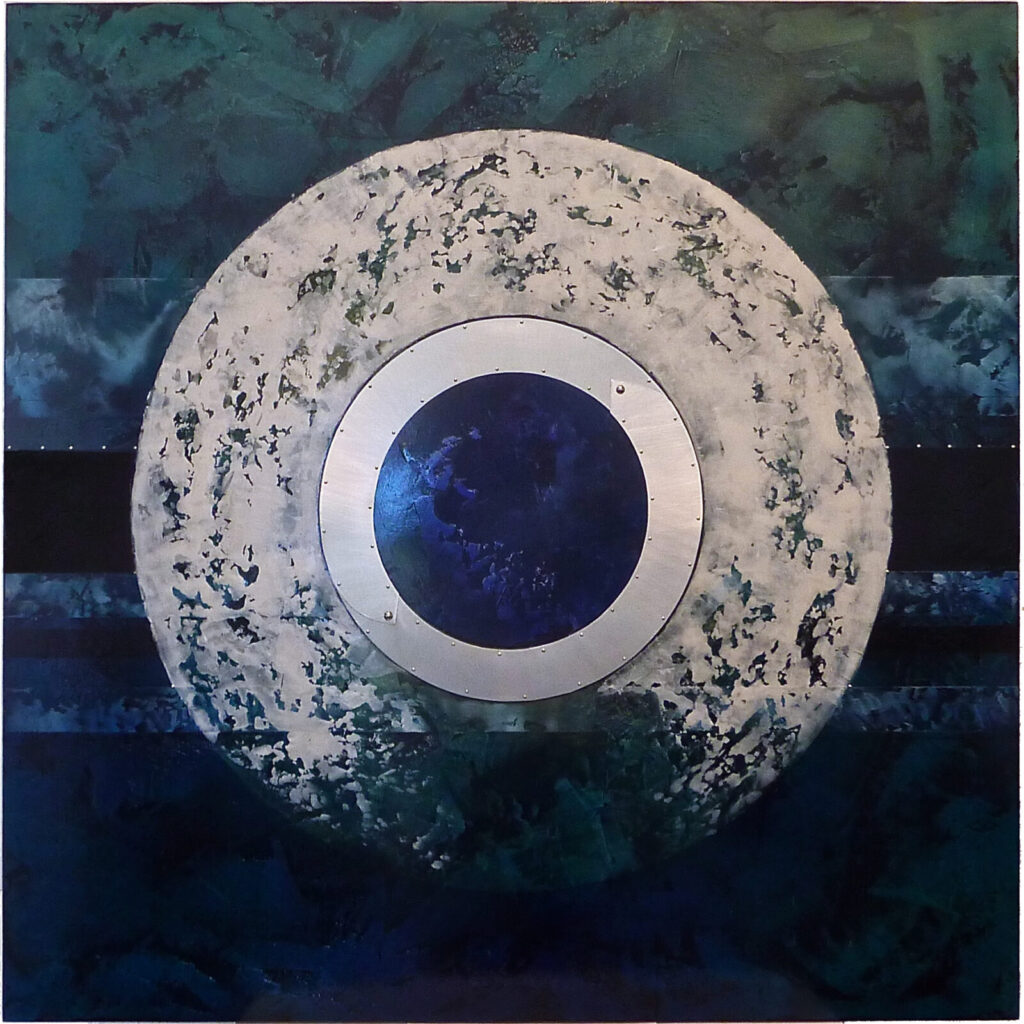
(Images of all artwork are courtesy of the artist.)




